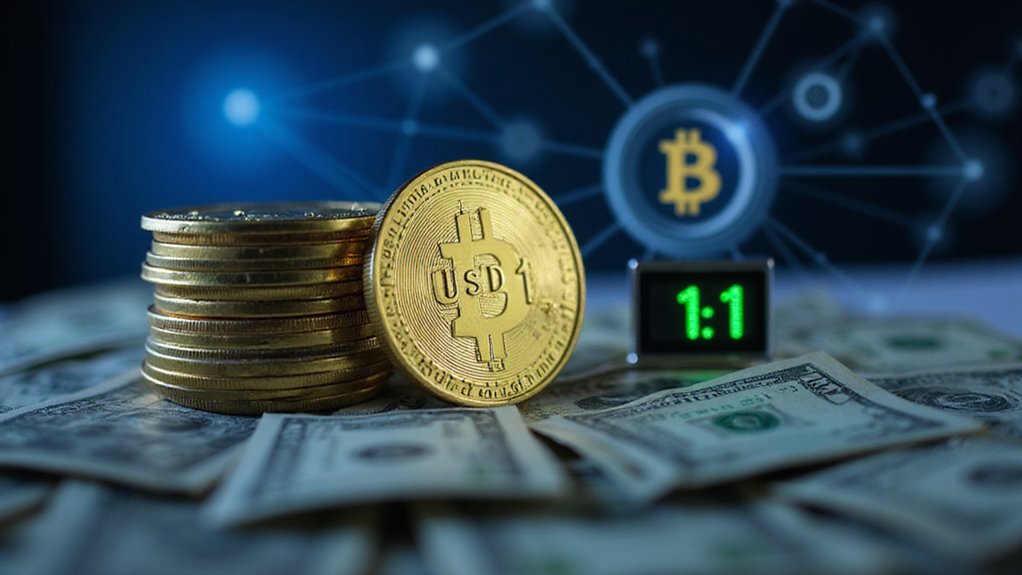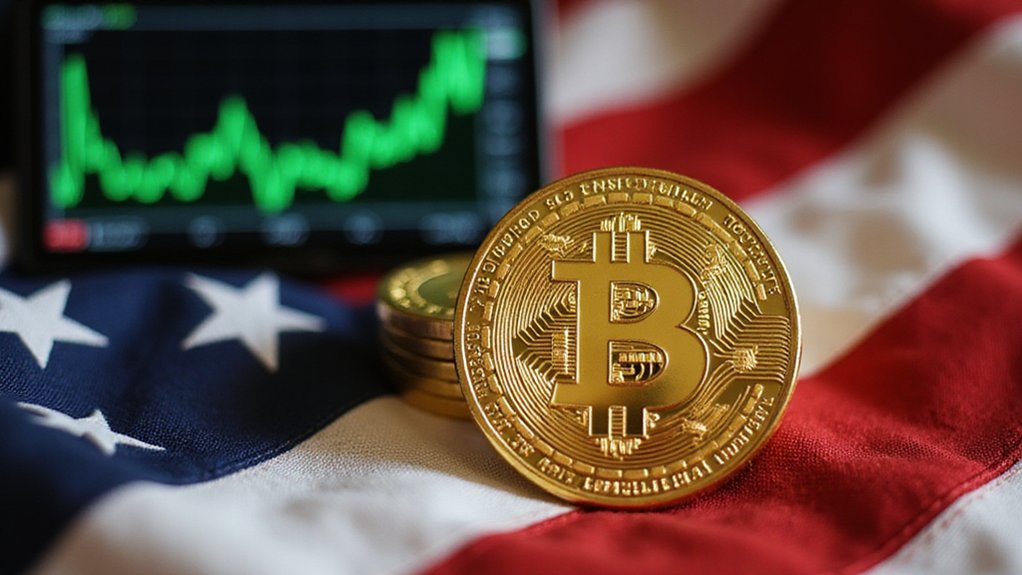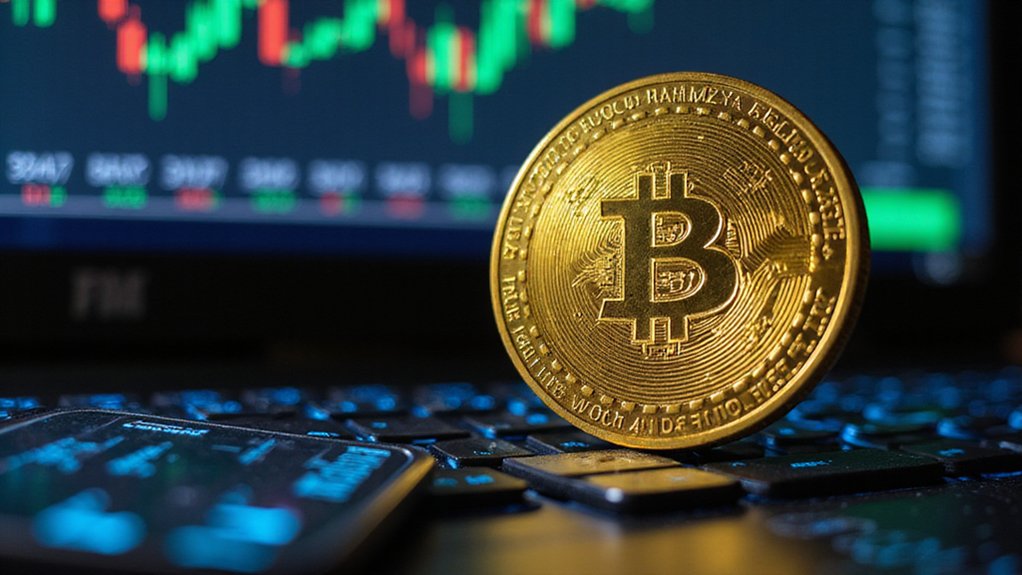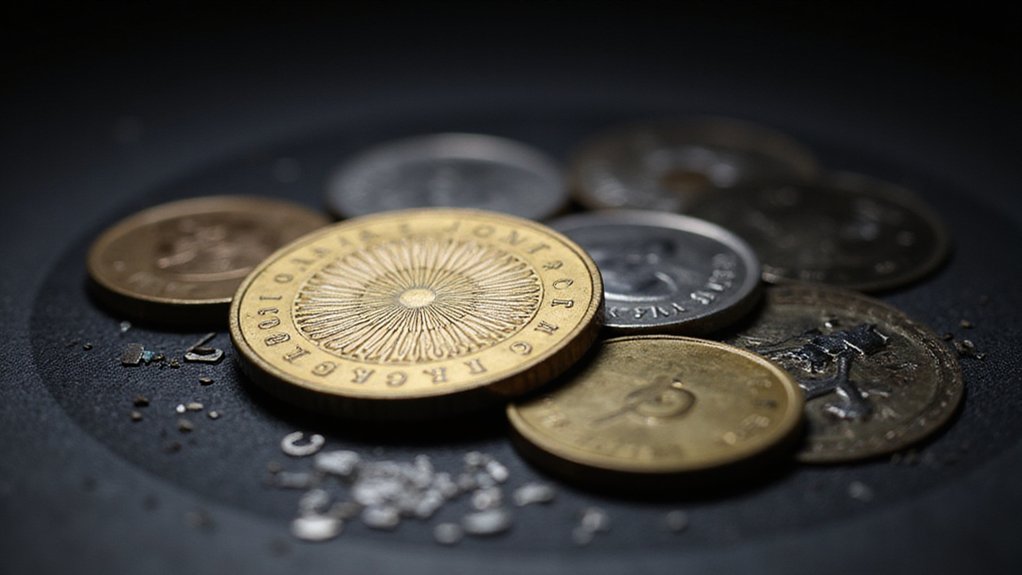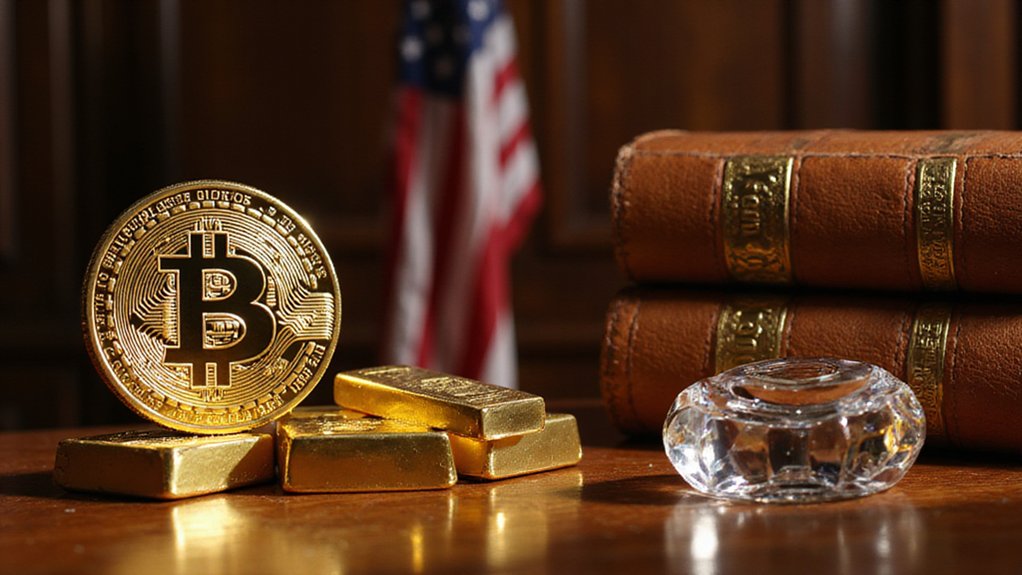USD1 is a new institutional-focused stablecoin backed 1:1 by US Treasuries, cash equivalents, and dollar deposits held by BitGo custodian. Built with integrated KYC/AML protocols, this ERC-20 token (also available as BEP-20 on Binance Smart Chain) aims to challenge USDC and USDT while maintaining regulatory compliance—unlike algorithmic alternatives. With $550 million pre-launch funding influenced by Trump’s crypto agenda, USD1‘s quest for liquidity hinges on institutional adoption amid regulatory uncertainty. The details behind its unnamed audit partners might raise eyebrows.
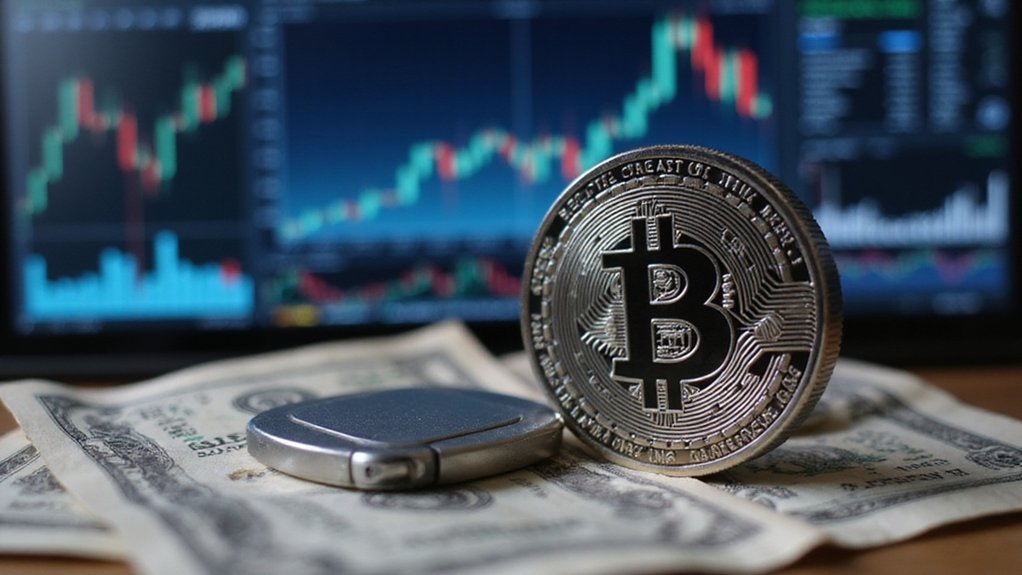
The latest entrant in the ever-expanding universe of digital dollars, USD1 emerges as a purpose-built stablecoin targeting the institutional market with the backing of World Liberty Financial (WLFi). Unlike its predecessors that often retrofitted compliance measures as afterthoughts, USD1 arrives pre-packaged with KYC/AML protocols—a shrewd anticipation of the regulatory scrutiny that has become the sector’s unwelcome houseguest.
USD1’s architecture adheres to the classical collateralized model, shunning algorithmic wizardry in favor of tangible backing. Each token maintains its dollar peg through a conservative portfolio of short-term US Treasuries, cash equivalents, and dollar deposits—all nestled in the regulated embrace of BitGo, a California-based custodian. This approach, while hardly revolutionary, sidesteps the spectacular implosions that have decorated the stablecoin landscape in recent years.
USD1 embraces the tried-and-true over algorithmic alchemy, backing each token with old-school treasuries rather than digital sleight-of-hand.
Operating initially as an ERC-20 token on Ethereum and a BEP-20 variant on Binance Smart Chain, USD1 positions itself for the inevitable multi-chain future that financial tokenization demands. The smart contracts undergirding this digital dollar have been engineered with DeFi protocol integration in mind—a nod to the hybrid future where traditional finance and its decentralized counterpart perform an uneasy tango. USD1’s 1:1 dollar peg provides users with stability that volatile cryptocurrencies like Bitcoin and Ethereum cannot offer.
WLFi’s $550 million pre-launch raise for its native $WLFI token suggests substantial resources behind this stable asset, though its Trump association introduces an unusual political dimension to what typically presents as politically agnostic financial infrastructure. Market positioning reveals USD1’s ambitions to challenge incumbents USDC and USDT in the institutional arena. The stablecoin’s development is notably influenced by Trump’s crypto agenda that aims to integrate digital assets into global finance for enhanced stability. Like other stablecoins, USD1 functions as a critical portfolio diversification tool during market turbulence, allowing investors to quickly shift assets away from volatility without exiting the crypto ecosystem entirely.
The stablecoin faces its share of hurdles: unnamed audit partners raise transparency questions, interest rate exposure creates yield management challenges, and the regulatory environment remains as clear as mud.
Nevertheless, USD1 represents a calculated wager that institutional adoption of compliant digital dollars will accelerate, particularly as cross-border settlements and treasury management continue their migration to blockchain rails.
Whether it gains the liquidity needed to matter remains, as with all financial innovations, a question only time will answer.
Frequently Asked Questions
How Secure Is USD1 Compared to Traditional Banking Systems?
USD1 offers robust security through multi-signature protocols, institutional custody, and cold storage—features that rival traditional banking safeguards.
While banks provide FDIC insurance and central bank backstops (luxuries the crypto world lives without), USD1 compensates with cryptographic verification, geographic redundancy, and immutable transaction records.
The stablecoin’s transparent 1:1 reserves and third-party audits further buttress its security posture, though regulatory uncertainty remains a lingering question mark in this evolving financial landscape.
Can USD1 Be Used for International Payments and Transfers?
USD1 is indeed designed for international payments, leveraging blockchain infrastructure to facilitate cross-border transfers with substantially reduced friction.
The stablecoin enables businesses to bypass traditional correspondent banking networks—with their attendant delays and fees (often 40-80% lower than wire transfers)—while maintaining regulatory compliance.
Its blockchain foundation guarantees near-instantaneous settlement across 130+ countries, though success ultimately hinges on local liquidity pools and the evolving regulatory landscape that varies frustratingly by jurisdiction.
What Happens to USD1 if the Issuing Company Fails?
If the issuing company fails, USD1 holders face a precarious position.
Without seniority claims in bankruptcy, they’d likely join unsecured creditors in a lengthy queue—after counterparties liquidate reserves and lawyers extract their pound of flesh.
The FTX precedent ($1B in professional fees) illustrates how assets evaporate before redemptions occur.
Reserve segregation might help, but without explicit legal protection, stablecoin holders remain at the mercy of bankruptcy courts and their notoriously voracious administrative costs.
Are There Transaction Limits When Using USD1?
USD1 faces a notable transaction constraint in the EU, where MiCA regulations impose a 1 million daily transaction limit on non-euro stablecoins.
This cap—potentially limiting for a stablecoin with $41.6M daily volume aspirations—applies specifically to European operations, not global markets.
While USD1‘s current transaction volume remains below this threshold, the restriction creates an uneven playing field compared to incumbents like USDT (processing 563.9M transactions on Tron alone) operating without similar EU caps.
How Does Usd1’s Technology Prevent Counterfeiting and Fraud?
USD1 employs a multi-layered security approach against counterfeiting.
Its verified smart contracts on Ethereum and BNB Chain establish authenticity, while pre-launch non-transferability prevents premature exploitation.
The ecosystem leverages institutional partnerships with Wintermute and BitGo for credibility, alongside Best Wallet’s verification tools to identify legitimate tokens.
On-chain labeled addresses and cross-platform alerts create a robust defense system—a rather impressive arsenal for a stablecoin that recognizes blockchain’s inherent transparency isn’t sufficient protection against modern financial shenanigans.
